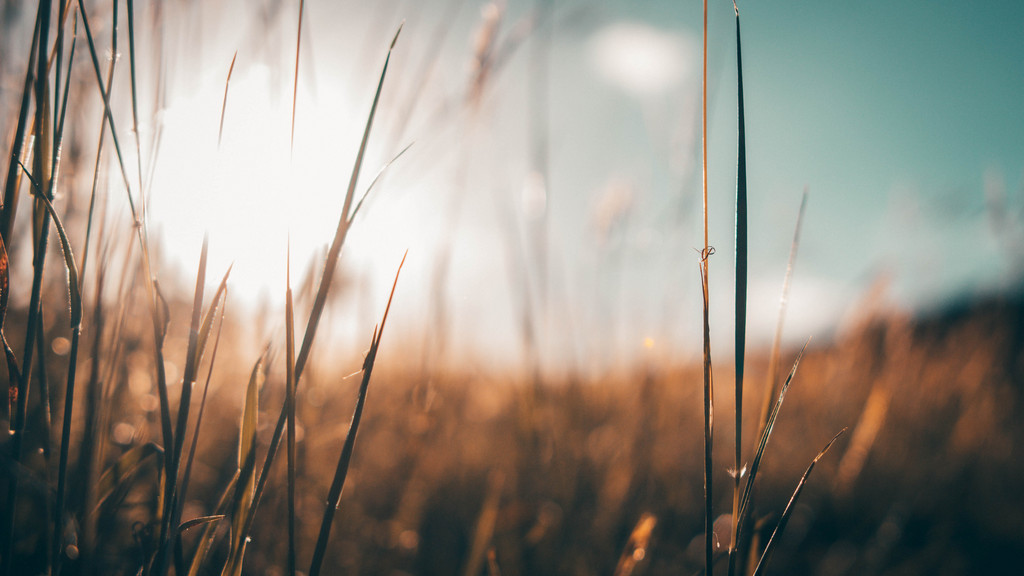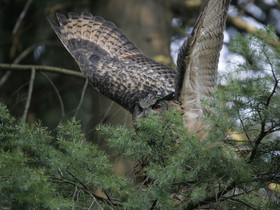

The fruit orchard is saved!! Thanks to Your donations we were able to buy and protect 8.000 m² of fruit orchard for the eagle owl just before Christmas. The land is now permanently secured for nature. We wish you a festive holiday and a happy new year! Best wishes, Naturefund and the eagle owls!


In this meadow orchard various sturdy, gnarled fruit trees grow, amongst which can be found a King of the Pippins tree, a type of apple that was already being cultivated in the 17th century.
Around the trees spreads the semi-dry meadow grass, upon which Daisies, Bell flowers, wild Majoram and many other plants are strewn in the Summer months.
Today according to the Federal Office for Nature Conservation, Germany, meadow orchards with large, ancient fruit trees belong to a strongly endangered type of biotope. They hold very little economic value. For fruit production, such trees were replaced through the intensive planting of weak, easily exchangeable small fruit trees.
The worth of an ancient fruit tree is not in the amount of fruit it produces. Every ancient fruit tree offers habitat for many species, often those that have become rare. In just one fruit tree up to 1,000 insect species can be found!
Various types of butterfly are frequent visitors to the semi-dry grass of the meadow orchard. Amongst them the Peacock, Brimstone, Green Hairstreak, Marbled White, Painted Lady, Wood White, Meadow Brown, Comma, Small Heath, Map, Old World Swallowtail, Orange Tip and many other types of butterfly can be observed.
They are attracted by the rich nectar and the pollen. In late Summer and Autumn they suck on the fermenting juice of the fallen fruit.
The Eagle Owl was almost wiped out in central Europe due to hunting and the widespread use of pesticides. Through the reintroduction into the wild of a number of captive Eagle Owls, their continued existence has slowly stabilized itself.
Between 1977 and 1985 the Eagle Owl nest close to the meadow orchard was kept under surveillance by HGON each year during the breeding time. Due to this intensive protection as well as the public work and informational tours of HGON, former Eagle Owl sceptics of the area and of the hunting grounds in the Limburg-Weilburg district were inspired to accept their presence.
Every year Eage Owls breed in stone quarry close to the meadow orchard. In the Limburg-Weilburg area, a total of 7 Eagle Owl pairs breed.
The meadow orchard is located in the Limburg-Weilburg region, on the edge of Runkel, a district of the city of Steeden.
7,640 m²
Red-backed Shrike, Great Grey Shrike, Grasshopper Warbler, Blackcap, Short-toed Treecreeper, Grass snake, Slow worm, Sand lizard, European Peacock, Admiral and Map butterflies.
Visitors for food include the Common Kestrel, Eurasian Sparrowhawk, Tawny Owl and the Eagle Owl.
Apple, Plum and Pear trees, Cowslips, Autumn Crocus, Cinquefoils, Mulleins, Wild Marjoram, gold Aster, Campanula, Crown Vetch, Round-headed Leek, Salad or Garden burnet and many others.
The area is richly structured with ancient fruit trees, semi-dry grass and is bordered by Whitethorn and Blackthorn hedges. The Lahn river flows approximately just 300m away. Various rare types of butterfly are found here. The Eagle Owl breeds in the adjacent quarry and hunts here.
The trees in the meadow orchard in Steeden are around 80 years old. For around ten years the meadow has been used as pastureland. This type of use has caused the displacement of many rare types of tree.
The local Limburg-Weilburg branch of the Hessian Society for Ornithology and Nature Protection (HGON) were able to lease this area in 1996 and cultivate the meadow naturally. Since then numerous species have returned. In order to ensure the preservation of this biotope, Naturefund and HGON have now bought the meadow.
HGON is the partner of Naturefund in this project and will become the future owner of the area of land. The local Limburg-Weilburg branch of HGON will manage this area in the long term.
In the future more ancient fruit tree types such as Mispel and Speyerling will be planted. A 'bee hotel' for wild bees will be established and the old existing fruit trees will be looked after. The meadow will be mown once a year and fertilizer will no longer be used. Otherwise the area will be left undisturbed.
Start: June 2006
End: December 2009
The meadow orchard is located in the district of Limburg-Weilburg, on the outskirts of the Runkel district of Steeden
7.640 m²
HGON - Arbeitskreis Limburg-Weilburg
Sorry, there is no comment for this project yet. Write the first one!
The animals near the orchard meadow in Limburg are red-backed shrike, Great Grey Shrike, Grasshopper Warbler, Blackcap, Treecreeper, Grass Snake, Slow Worm, Sand Lizard, Peacock Butterfly, Admiral, Map. Occasionally you can also see kestrels, sparrowhawks, tawny owls and eagle owls foraging for food.
Among the fruit trees there are apple, plum and pear trees, as well as meadow cowslip, autumn saffron, silver cinquefoil, black king candle, wild marjoram, golden aster, Rapunzel bellflower, crown vetch, spherical leek, small meadow knob and many other plants.